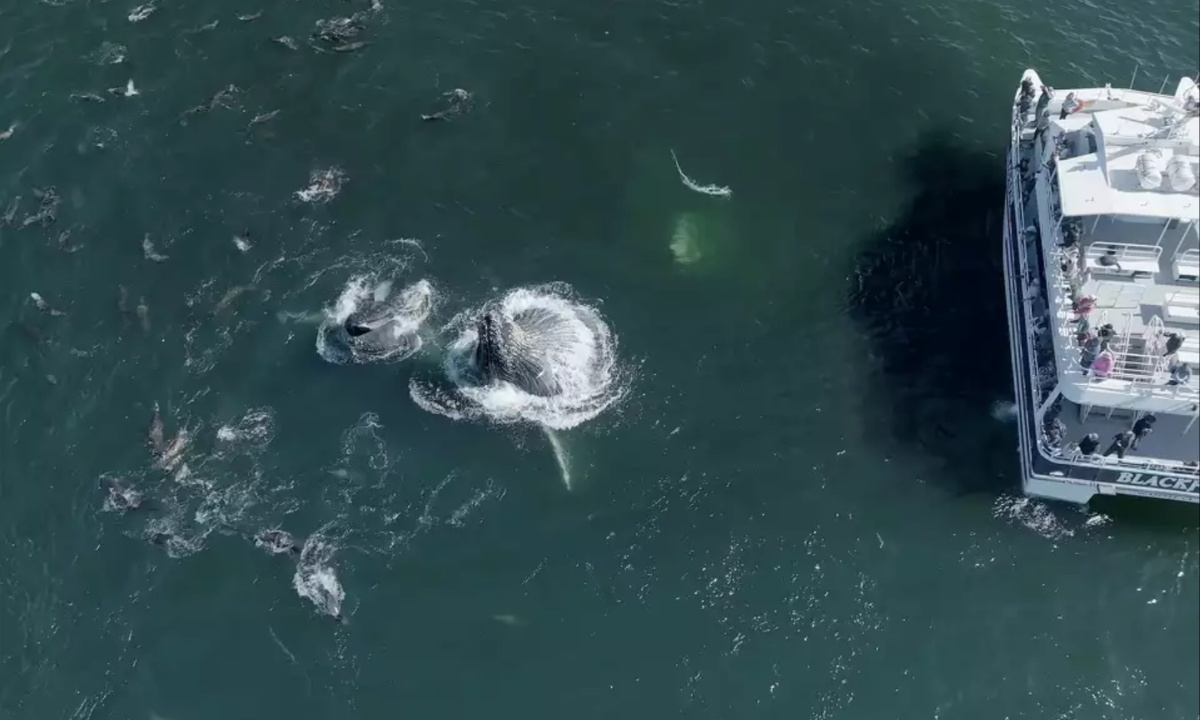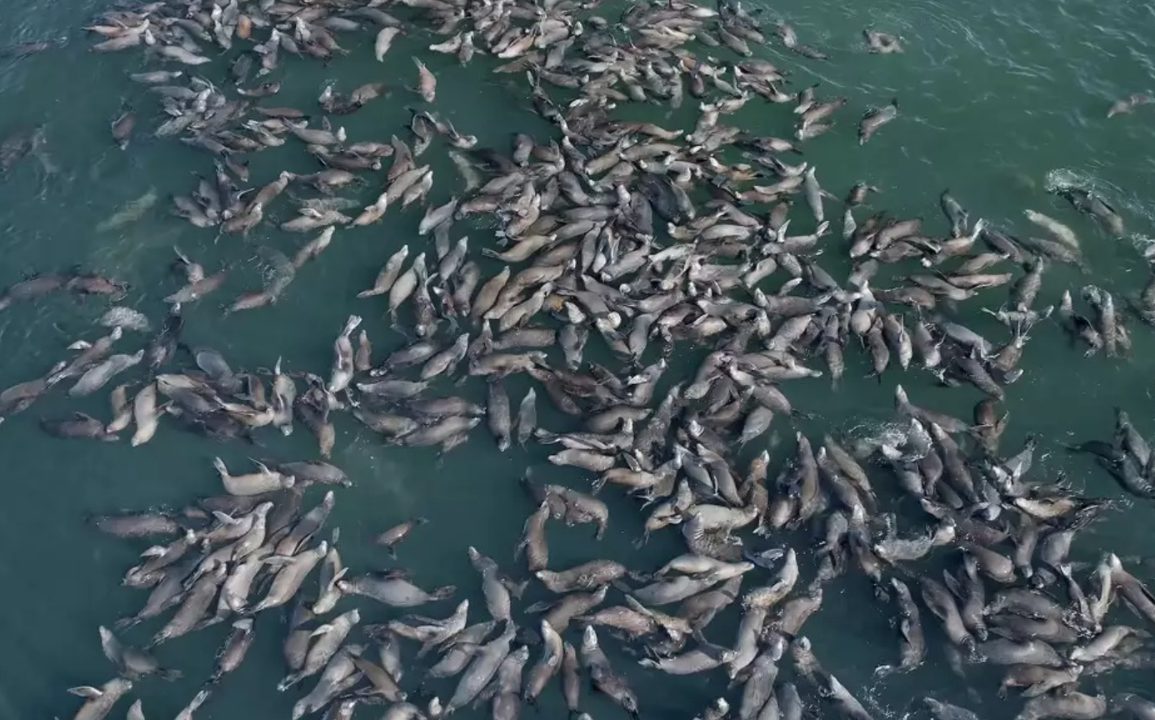On Wednesday, over 65 humpback whales were spotted in Monterey Bay, engaging in a spectacular display of lunge feeding. A video posted by Monterey Bay Whale Watch captured these massive creatures lunging from below the surface, their mouths wide open as they gulped down hundreds of fish in one swift motion.
This phenomenon is a remarkable sight for both whale watchers and marine biologists, showcasing the whales’ unique feeding strategies as they hunt for food.
The whales were reported to have been in multiple feeding groups for four continuous hours, with the crew aboard The Blackfin declaring it the most impressive lunge feeding they had ever witnessed. Marine biologist Nancy Black explained that the rich supply of anchovies in the bay is what draws the humpbacks to this area.
During these frenzies, a single whale can consume between one and two tons of food daily, underscoring the significance of Monterey Bay as a crucial feeding ground for these marine giants.
Black highlighted that the anchovies are located just a few miles from Monterey Harbor, making it easier for the whales, along with sea lions and various birds, to take advantage of the bountiful food source.

While sea lions often gather in groups, the humpbacks tend to spread out more in the water, creating a dynamic feeding environment. Although such frenzies have been occurring over the past few weeks, they are not a daily occurrence, as the visibility of these feeding events can depend on the depth of the anchovies below the surface.
The unpredictable nature of the whales’ feeding behavior adds an element of excitement for those hoping to catch a glimpse of this phenomenon. According to Black, it is a matter of luck whether observers will witness a feeding frenzy, as the arrival of the fish can be random and unpredictable.
This variability contributes to the thrill of whale watching in Monterey Bay, as enthusiasts eagerly await the chance to see these magnificent animals in action.
Humpback whales migrate to Monterey Bay from late April to early December, heading to warmer waters off Mexico for the winter. This feeding season is essential for building up fat reserves, known as blubber, which the whales rely on during their migration.
Despite their classification as an endangered species, Black noted that humpbacks in Monterey Bay are thriving, with numbers reported to be ten times higher than in previous years—a remarkable success in marine conservation efforts.

